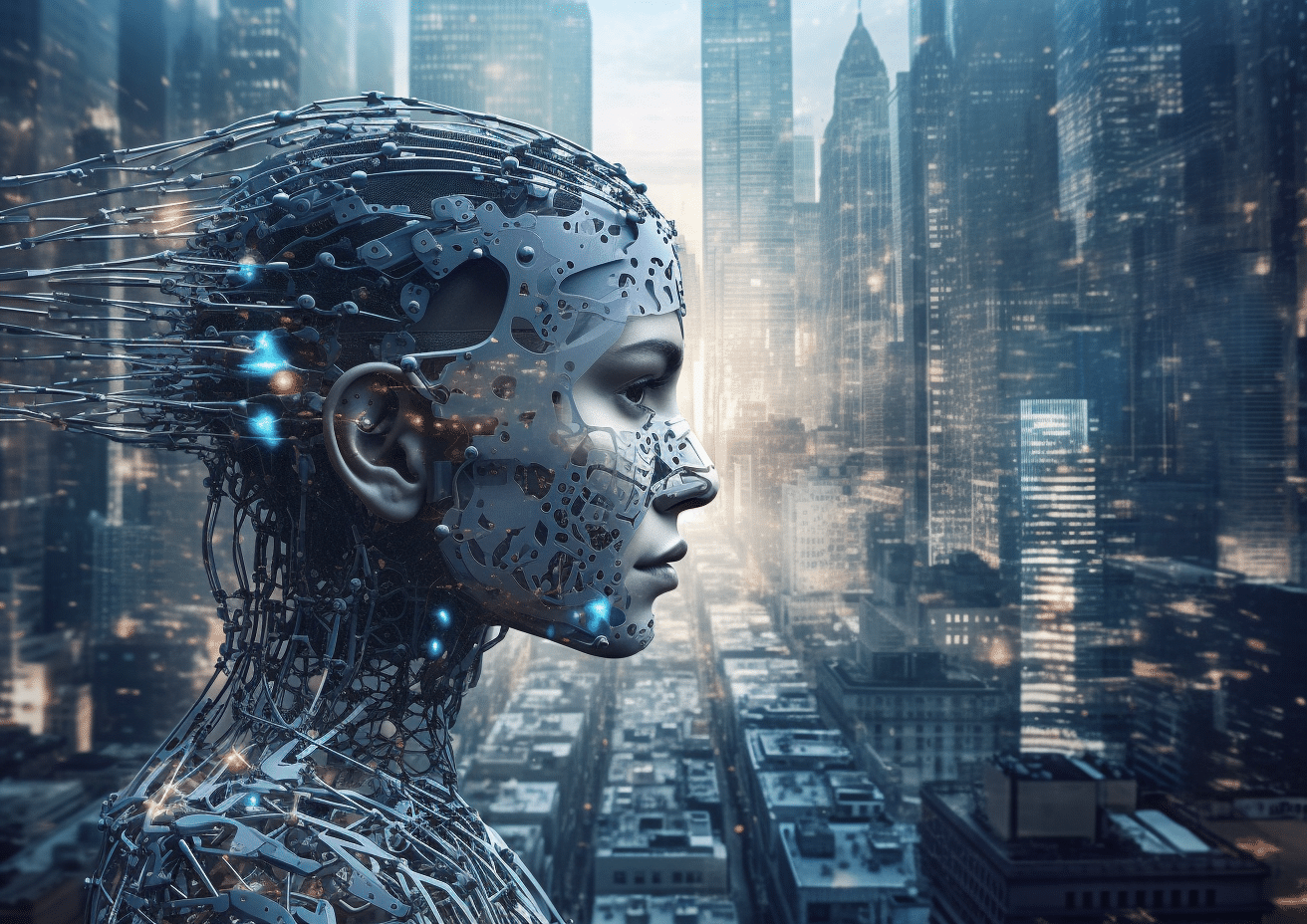ChatGPT, The Concept of Singularity & The Future of AI Explored
OpenAI's ChatGPT, its diverse applications, and the intriguing concept of AI singularity. Explore the challenges and opportunities in AI, from job displacement concerns to striking a balance between regulation and innovation.

ChatGPT App For iOS is Here
OpenAI launched the ChatGPT app for iOS today in the U.S. The app syncs conversations across devices and supports voice input by integrating Whisper, OpenAI’s open-source speech-recognition system. The launch of this app brings the latest model improvements to users’ fingertips.
OpenAI’s ChatGPT has been a revolutionary tool in A.I. communication, quickly becoming a favorite for people from all walks of life. This language model, developed by OpenAI and powered by machine learning, has proven its versatility and value in numerous ways, leading to its widespread popularity and even causing a stir among the intelligentsia.
ChatGPT Across Different Fields
ChatGPT has been a game-changer for many. For instance, a freelance writer might use ChatGPT to brainstorm ideas, draft articles, as I did here, and even proofread content, thereby saving time and enhancing the quality of their work.
A student might use ChatGPT for tutoring in various subjects, from mathematics to history. The A.I. model can provide explanations, answer questions, and even generate quiz questions for practice.
ChatGPT can be a virtual assistant for professionals, helping manage emails, schedule appointments, and draft reports, significantly improving productivity and allowing them to focus on more critical tasks.
The Singularity in A.I.: A Runaway Train or a Manageable Transition?
The rise of ChatGPT has sparked intellectual curiosity and debate, notably around the concept of “singularity” in artificial intelligence (A.I.). As discussed in The New Yorker’s article, “Can We Stop Runaway A.I.?” this theoretical point refers to a moment when A.I. systems become so advanced that they can improve themselves exponentially, potentially escaping human control which could lead to A.I. infiltrating every aspect of our technological lives, disrupting infrastructure, financial systems, communications, and more.
A.I. Alignment: A Crucial Step Towards Safe A.I.
The New Yorker article also explores the idea of A.I. alignment, which aims to ensure that A.I. systems align with human goals to prevent unintended consequences. However, the challenge lies in that transitions between A.I., artificial general intelligence (AGI), and superintelligence could happen without our detection. This raises the question of how we can ensure that future, more sophisticated A.I. systems do not result in unintended and potentially harmful consequences. It’s a complex issue that requires careful thought, rigorous testing, and even new approaches to A.I. development.
Regulation vs. Innovation: Striking the Right Balance
The potential for regulation in the field of A.I. is another critical topic. While some restrictions have been proposed or enacted for the deployment of A.I., the competitive nature of the field and the potential benefits of A.I. make halting its development difficult. This presents a conundrum: how can we balance the need for regulation with the desire for innovation and progress in A.I.? This question is particularly pertinent given the rapid advancements in A.I. and the increasing integration of A.I. systems into our daily lives.
Managing the A.I. Transition and Job Displacement Concerns
The rapid advancement of A.I. has raised concerns about job displacement. As A.I. systems become more capable, there’s a fear that millions of jobs could be automated, leading to widespread unemployment. This concern was a significant topic during OpenAI CEO Sam Altman’s senate hearing about A.I. Regulation. Altman emphasized the importance of managing the transition carefully, providing retraining opportunities, and implementing policies to ensure that the benefits of A.I. are broadly shared.
Conclusions: Embracing Opportunities and Challenges
The rise of ChatGPT and its subsequent popularity among a diverse range of users is a testament to the potential of A.I. As we continue to explore and push the boundaries of what A.I. can do, it’s crucial to consider both the opportunities and challenges that come with it.
Whether it’s aiding in a writer’s creative process, enhancing a student’s learning, or streamlining a professional’s workflow, A.I. tools like ChatGPT have proven their potential. However, the looming idea of the “singularity” in A.I. and the issues around job displacement call for a balanced approach to A.I. development.
Thoughtful dialogue about their implications for our society and future is necessary as we continue to embrace these advanced tools. The conversation needs to be steered towards technological innovation, ethical considerations, and strategies for managing the transition to a world where A.I. plays an increasingly significant role. As we forge ahead in this exciting era of A.I., striking the right balance between regulation and innovation, and aligning A.I. systems with human goals, will be paramount in shaping a future where the benefits of A.I. are broadly shared.
In realizing the full potential of A.I., it is crucial to recognize that combining creativity and talent with tools like ChatGPT can be considered a superpower. This potent combination can unlock unprecedented opportunities, push boundaries, and lead to innovations that we are only just beginning to imagine.

